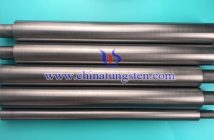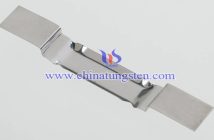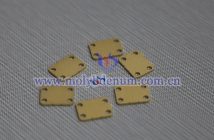Molybdenum copper sheet is a composite material made from metallic molybdenum (Mo) and copper (Cu) through powder metallurgy or infiltration processes. Due to its excellent thermal, electrical, and chemical properties, it is widely used in many fields: in electronics for chip packaging substrates, power device heat sinks, and microwave device heat dissipaters; in aerospace for high-temperature components of spacecraft and satellite communication antenna substrates; and also in medical equipment as heat dissipation parts for superconducting magnets.
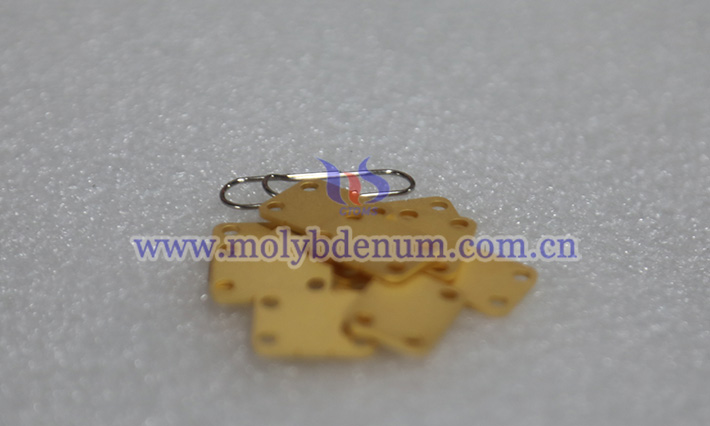
CTIA GROUP LTD molybdenum copper sheet picture
Generally, the physical and chemical parameters of molybdenum copper sheet vary depending on its composition ratios. From a microscopic structure perspective, molybdenum copper sheet exhibits an interlocking “molybdenum skeleton–copper filling” morphology. The molybdenum phase forms a high-melting-point, high-strength skeleton, while the copper phase fills the gaps between molybdenum particles, creating a continuous thermal and electrical conduction network. This structural design combines the excellent properties of both metals: molybdenum’s high-temperature resistance and low thermal expansion coefficient synergize with copper’s high thermal and electrical conductivity, allowing precise performance tuning by adjusting the composition.
Characteristics of molybdenum copper sheet: high thermal conductivity, low thermal expansion coefficient, fatigue resistance, good electrical conductivity, strong corrosion resistance, excellent machinability.
The high thermal conductivity of the copper phase makes molybdenum copper sheet an efficient heat dissipation material. Its thermal conductivity generally increases with copper content; for example, MoCu15 has a thermal conductivity of about 195 W/(m·K), while MoCu20 reaches about 204 W/(m·K).
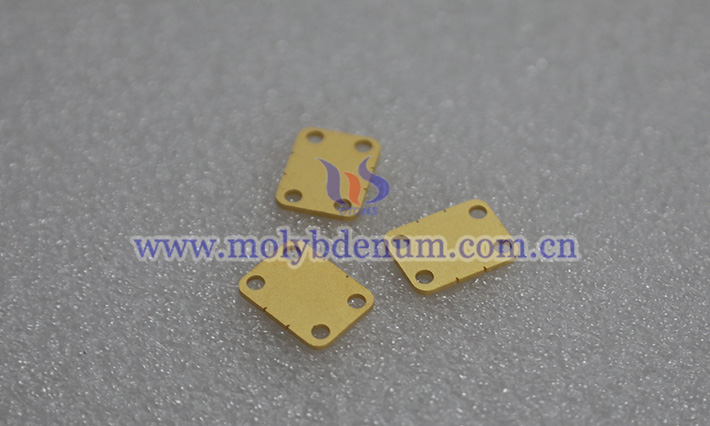
CTIA GROUP LTD molybdenum copper sheet picture
Molybdenum’s low thermal expansion significantly reduces the overall thermal expansion coefficient of the composite. By adjusting the molybdenum-copper ratio, the coefficient of thermal expansion (CTE) can be tuned within 5 to 10 × 10??/°C. For instance, a molybdenum copper sheet with 85% molybdenum and 15% copper has a CTE of approximately 6.8 × 10??/°C, closely matching gallium arsenide (GaAs) chips, effectively preventing solder joint cracking or package failure caused by thermal stress during temperature cycling, thus meeting aerospace device reliability requirements.
The molybdenum skeleton provides excellent mechanical strength, with tensile strength increasing as molybdenum content rises. Even at elevated temperatures (300–500°C), molybdenum copper sheet maintains 70% to 80% of its room-temperature strength, suitable for high-temperature connectors in spacecraft.
The continuous copper network grants good electrical conductivity, making molybdenum copper sheet suitable as circuit interconnection substrates or signal transmission carriers for microwave devices. In high-frequency applications, molybdenum copper exhibits low dielectric loss and magnetic permeability close to vacuum, minimizing electromagnetic interference and ensuring stable signal transmission.
Molybdenum copper sheet can be processed into high-precision parts via cutting, laser machining, and other techniques. For example, in semiconductor packaging, laser drilling can create multi-layer wiring, or hot rolling can produce ultra-thin sheets, meeting the integration needs of miniature electronic devices.

